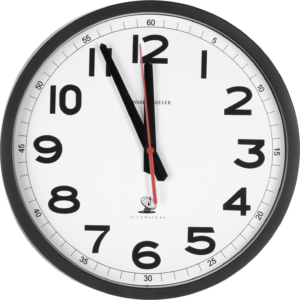
Hot Topics
The Best Laid Plans of Mice and Men
October 14, 2021
 When PPM was new to all of us, a lot of us focused on clocks. Proper placement of commercial breaks were analyzed to maximize every quarter-hour.
When PPM was new to all of us, a lot of us focused on clocks. Proper placement of commercial breaks were analyzed to maximize every quarter-hour.
Being off by just a few minutes can have a detrimental impact on your ratings, and therefore your bonus.
So what do you do?
Many broadcasters felt that the bowtie method (breaking just before :15 and :45 of the hour) would yield more credited quarter-hours, while others favored the hourglass method (breaking just before :00 and :30 of the hour).
Remember, the meter must record at least five minutes of listening within a single quarter-hour for the station to get credit for that quarter-hour (check out this blog for a detailed explanation). Executed properly, either method should help get credit for more quarter-hours and result in better ratings.
The key in the above statement is “executed properly.” While the logs may document that the break should start at 12 minutes after the hour and end at 17 minutes after, the personality may start a few minutes later. If that happens, that second quarter-hour may be lost as meter listeners may not come back in time to record enough minutes.
First: Communicate. Inform and remind your on-air team about the importance of the clock and paying attention to when the breaks run. Their success, in addition to yours, is dependent on the breaks running at the correct times. Like a great actor, they have to hit their mark precisely every time. Missing that mark may result in lost listening credit.
Second: Monitor. Program Directors are stretched in more directions than ever before. Some may argue that nothing is more important to their success than driving great ratings. With that said, every PD needs to build a system to monitor precisely when the commercial breaks run. People will not do what you expect, but what you inspect.
Third: Correct. When the breaks run at the wrong time, use your management skills to correct this error for future success.
There is no argument that Program Directors wear multiple hats, but having your team come in and out of breaks to maximize ratings is essential. And we are all happier when we have ratings success.
Reach out to us here if you’d like to discuss the issues involved in clock management.
-Charlie Sislen, Partner
Comments